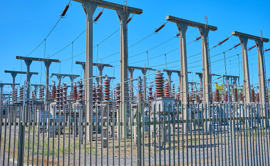Emergency rescue of thousands of fish from Pontsticill Reservoir for Welsh Water
Published: 12 September 2022
Project overview
In August, Welsh Water contacted us to enquire about an emergency fish rescue from the upper part of Pontsticill Reservoir. Due to exceptionally low water levels, high densities of fish were noted near the outlet of the upper part of the reservoir, with the passage of fish from the upper part of the reservoir to the lower being obstructed by the low water levels and associated siltation.
Our solution
Following the call from Welsh Water, our Environmental Services and Consultancy teams attended site on the same day to install emergency aeration which sustained the fish overnight before the fish rescue could commence on the following day. In total, 11 Adler and Allan personnel from across Environmental Consultancy and Environmental Services, as well as three staff from Welsh Water, were onsite from 9am to carry out the rescue.
On arrival at the site, it was apparent that water levels were continuously dropping and a small number of fish were displaying signs of distress. This meant that not only did the rescue have to be carried out quickly, but also in a manner which would minimise further stress to the fish.
An initial plan was formed whereby a seine net was to be drawn across the narrow channel at its furthest point from the outlet. From this point it was to be pulled by operatives either side of the channel towards the outlet. This was to increase the density of fish and allow them to be hand netted into buckets for manual transportation to the lower part of the reservoir.
What was a simple plan turned out to be difficult to implement due to the depth of silt/mud present (>1m in places), both within the remaining body of water and along its banks. Quickly operatives set about installing boarding that would allow colleagues to walk across the muddy substrate to access the water. Having safely accessed the water via the boarding, operatives discovered that the silt depths alongside the channel were generally shallower than those surrounding it. This allowed for colleagues to safely walk the net up the channel from the outlet and, after setting the net, successfully draw fish towards it.
Fish were subsequently removed from the netted area with the use of seine netting and hand netting methods. The fish were then manually transported up the bank of the upper reservoir and down the overflow channel steps to the lower reservoir. This process was repeated three times to the point where few large (>10cm length) fish remained in the upper part of the reservoir.
Outcome
In total, approximately 3,000 fish were rescued as a result of the hard work and persistence of all those involved.

More from our Knowledge Hub
Environmental compliance today, creating a sustainable tomorrow
Helping you reduce risk to the environment and your operation by managing assets compliantly while achieving commercial, ESG, and net-zero goals.
Contact our experts




